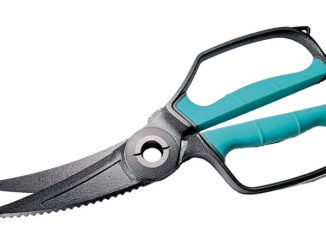
Capt. Theophile Bourgeois III shares trout tips and tactics to put more fish in the box
In this excerpt from Trout Masters Too: How the pros do it, Capt. Theophile Bourgeois III with Bourgeois Fishing Charters shares tips that everyone can use to catch more specks.
— Read the water. Study water enough to recognize bait activity. Nervous water over schools of bait looks like vibrating water. No prey means no predators. Mullet are the main thing. The best-sized mullet are 3 to 4 inches long.
— If a fish boils the water or swirls at a topwater bait but doesn’t take it, change the retrieve. Slow it down. Pop it twice, then once, then twice, pause, and then repeat, trying not to cover any distance. If that doesn’t produce action, make the bait move highly erratically while moving it a minimal distance. Watch the water under and around the lure. If a needlefish is messing with the lure, and then jumps on top of the water and skitters away, a trout is nearby.
— Slow the boat down to an idle 500 feet from the spot you want to fish. Troll in the last 100 feet.
— Braided line offers better sensitivity for soft winter bites and allows for easy hook sets. Set the reel drag very lightly on casting reels to keep the line from digging in on the spool. Don’t use the reel as a winch or the line will bury. If you get hung up, don’t wrap your hand with the line and pull; it will cut to the bone. Instead wrap it on a boat cleat.
— Keep the rod tip at 10 to 12 o’clock. Use your wrist to twitch the bait (2 to 3 inches, at the most), not your whole hand.
— When casting topwater lures or corks, use your free hand to gently pinch the outgoing line ahead of the reel near the end of the cast, to keep the lure from tangling in the line.
— Most people want to get a new chip for their GPS. Use old maps in your GPS because they show the locations of points and islands that have eroded and are submerged. Those contours will often still hold fish.
— Extend the lives of topwater lures by spraying them with WD-40 after each use. Fish can’t smell WD-40 on topwater lures.
— Strong currents from big tidal ranges — those over 2 feet — mean fish will not be holding at the tip of a point. Look 50 to 100 feet downcurrent, off the point, especially in an eddy.
— Use polarized sunglasses. They protect eyes from hooks, as well as from the sun, and they allow anglers to see into the water to recognize bait. His personal favorite is the Wiley X brand.
— Never fish into the wind. The waves slap on the bow loudly, announcing “here we come.”Trout are noise-sensitive. Even use your trolling motor as little as possible.
— Instead of using an anchor and chain, consider purchasing a Power-Pole or Talon anchor system. They are quieter and faster.
— Use long rods. Distance is important. The farther you can get a lure away from the boat the better.
Learn more about how the best guides and anglers across the Louisiana coast catch trout day in, day out by purchasing the Trout Masters Tool Kit, which includes a special package price for Trout Masters: How Louisiana’s Best Anglers Catch the Lunkers and Trout Masters Too: How the pros do it.


